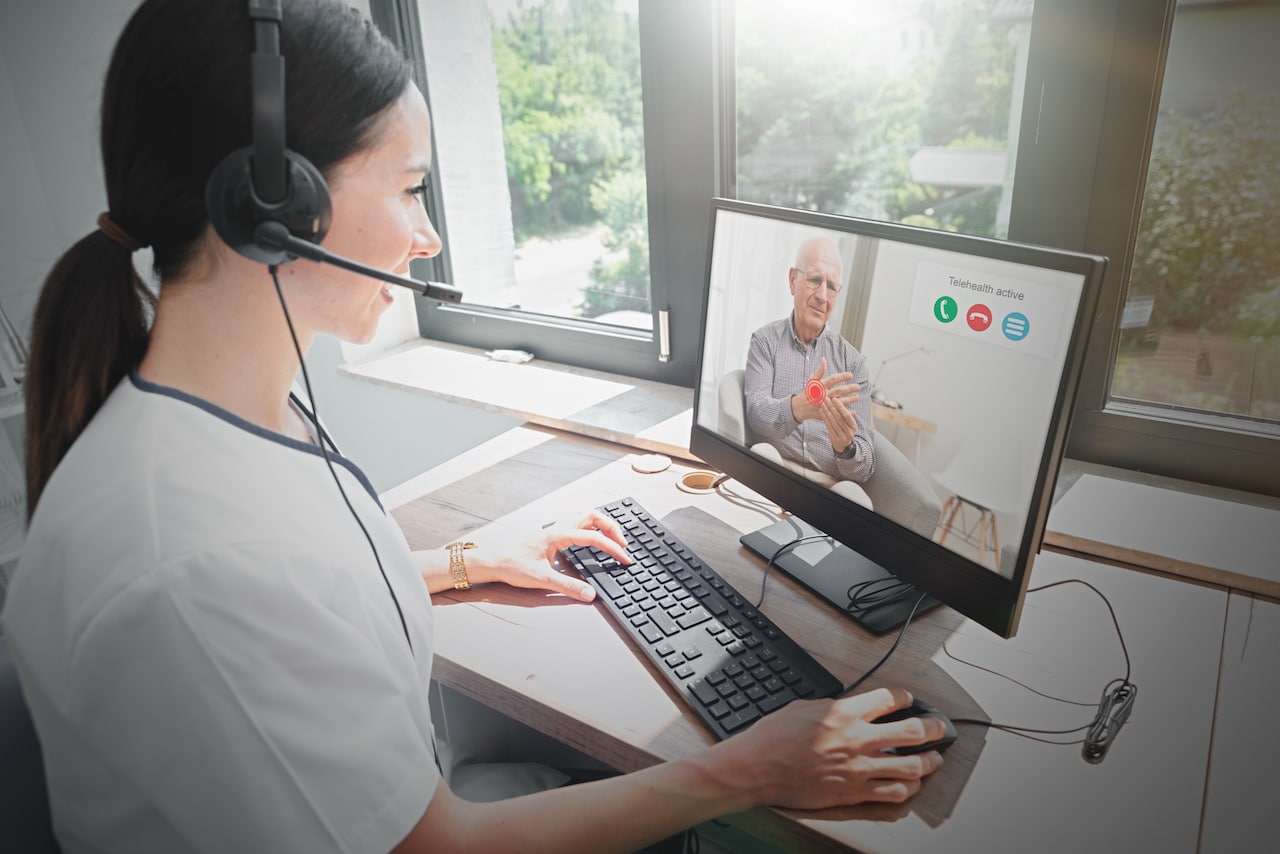COVID-19 has forced many businesses to make a quick transition to remote working in order to remain open and productive. This includes many healthcare organizations, including pharmacies.
The healthcare industry as a whole has worked to quickly implement remote solutions that work for patients and physicians alike. The use of technology to provide remote healthcare is known as telehealth. When applied to pharmacies, telehealth can more specifically be referred to as telepharmacy.
Telepharmacies have essentially the same functions as regular pharmacies, but pharmacists use tools such as video conferencing to assist patients and provide prescription information. Telepharmacy is both convenient and effective, but it does come with some challenges. This article will help you to understand those challenges and find solutions to overcome them.
How a Telepharmacy Works
First, it’s important to understand the basic processes of telepharmacies.
As in traditional pharmacies, first, a prescription arrives at a telepharmacy through the prescription management system (PMS).
Once the prescription arrives, a technician will prepare the medication for dispensing. In order for the prescription to be verified and filled, technicians capture and send images of the medication labels, script, and pills to the remote pharmacist. The patient’s profile and the images are securely stored on the cloud for review.
The pharmacist will review the patient’s medication profile for any problems or drug interactions before they verify the prescription and either reject or approve the request. If it’s rejected, they will leave notes for the technician regarding the issue. If approved, the technician can call the patient.
Before a prescription can be dispensed to a patient, the patient may need to speak with a pharmacist. This can be completed via live video chat. Patient consultation sessions are kept safe, secure, and private via a HIPAA-compliant live-video HD connection.
When trying to implement telepharmacy solutions in your own pharmacy, there are several things to consider.
Caring for Patients
It can be difficult to adequately care for patients when connecting with them remotely. For best results, plan ahead. Be sure to troubleshoot technical issues, allow extra time for appointments, and arrange to hold calls in quiet, tidy locations. Make use of checklists and tools to make sure any issues are covered.
Also ensure that patients are prepared. They should understand how to access virtual appointments and have access to any monitoring devices they may need, such as blood pressure cuffs or a glucometer.
One of the most important things to remember is that patients should be cared for with the same level of service they would receive if they went to a pharmacy in person. To best care for and connect with patients, try the following tips:
- Look directly at the camera and keep it at eye level.
- Sit still and pay attention.
- Check the lighting of the room you’re in and adjust so you’re lighted from the front.
- Keep background noise to a minimum.
- Ask open-ended questions that allow patients to fully explain their situation, such as, “Tell me the steps you follow to use your inhaler.”
- Document all remote appointments as you would live appointments.
- Ensure that patients hear and understand all instructions.
Tools for Communication
If you’re working remotely as a pharmacist, then having the right tools is essential to make sure you’re set up for success. Some of the basic tools that are essential for telepharmacists include:
- A computer or laptop and supporting equipment, including charger cables, wifi adapters, a mouse, a keyboard, and headphones with a microphone.
- A webcam.
- A phone or internet-based phone solution.
- Software such as Zoom, Skype, or Microsoft Teams for holding work meetings and remote patient consultations.
- A good WiFi network. You may want to check that the WiFi connection you have at home is strong enough to support remote work. Sometimes it’s necessary to change your bandwidth to accommodate the extra demand on your WiFi.
Staying Secure
In the past few years, and especially this year during the COVID-19 pandemic, cyber attacks against healthcare organizations have increased at rapid rates. To protect patient data and remain compliant to industry guidelines, medical systems should remain heavily guarded.
During this vulnerable time, it’s even more important to increase cybersecurity measures.
During any patient connections, make sure to properly confirm the patient’s identity. Obtain consent to treat and ensure that the room you are in remains private by locking the door or posting signs.
Use a VPN (a virtual private network), set up multi-factor authentication on your devices, and use strong passwords. Wherever possible, limit access to confidential information by requiring permissions to view files.
In addition to cyber risks, though the government has provided for failings in remote healthcare during the COVID-19 pandemic, the inherent risk of telehealth has created an environment where healthcare liability is being scrutinized.
As providing treatments and controlling patient information becomes more and more complex, pharmacies have a greater need for strong professional liability and general liability insurance coverage. There is a wide variety of retail pharmacy insurance that can help to ensure that pharmacies are well-guarded against the mistakes that will inevitably occur in a transitioning workforce.
By using these tips to connect with patients, ensure you have sufficient remote equipment, and remain secure both in terms of cybersecurity and liability, your telepharmacy will be even better suited to serve patients safely.




